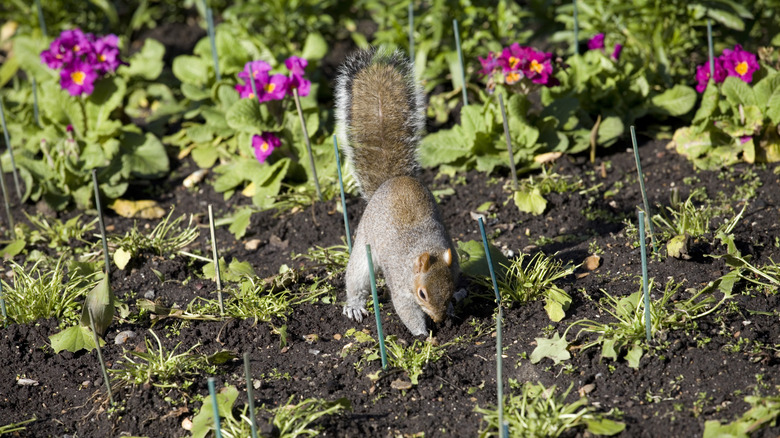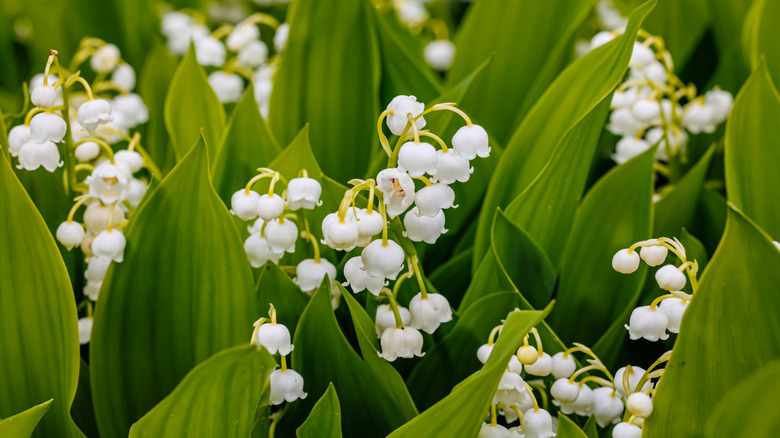Are Lilies Of The Valley The Secret To Repelling Pests? What To Know Before Planting
If you're a fan of watching wildlife, then you already know that cultivating a garden with a variety of plants is the best way to attract more of your favorite animals and insects. Of course, it can also attract a few unwelcome guests. There's nothing quite as heartbreaking to a gardener as going outside to see bite marks on foliage or a squirrel scampering away with one of your flower bulbs. Luckily, there are a few clever ways to deter these pests and protect your plants. One of the easiest ways to keep pests at bay is to add a few plants that work as natural pest control, like lily-of-the-valley (Convallaria majalis).
The best plants for deterring animals like rabbits, deer, and squirrels are those that are aromatic, prickly, and toxic, or have milky sap and tough leaves. Lily-of-the-valley has a few of these traits, making it a great option if you're sick of dealing with hungry critters. This asparagus (Asparagaceae) family perennial puts out white, highly fragrant flowers that bloom for three to four weeks in early to mid-spring. While humans appreciate the sweet scent, pests like groundhogs and squirrels aren't a fan of it. Plus, its toxic roots aren't an appealing snack to these rodents, so they tend to avoid it altogether. That said, every part of this plant is also highly poisonous to humans and pets, so plant with caution if you have curious little ones or four-legged friends.
What to know before planting lily-of-the-valley
Lily-of-the-valley is a drought-tolerant ground cover you can easily grow in your yard or garden, but it does come with a few caveats. While it's not considered to be a noxious weed in most areas, it's still important to control its spread to keep it from outcompeting nearby native species. When given the right conditions, it'll spread through underground rhizomes, potentially forming dense colonies if not kept in check. One way to manage this species is to dig out new growth, particularly once it's done flowering. You can't leave any piece left behind; all it takes is a small root chunk for it to pop back up into a new plant. Because it's extremely poisonous, make sure to wear gloves when handling any part of the plant to prevent skin irritation.
You can grow lily-of-the-valley in shady gardens within zones 3 to 7, ideally in a spot away from other plants where it will have plenty of room to spread. Because of its deep roots, lily-of-the-valley makes an excellent plant to prevent soil erosion on slopes or in areas prone to soil runoff. It thrives in moist, organically rich, well-drained soil and is drought-tolerant once established. Older plants may not flower as profusely, though it's easy to propagate by division in spring or fall to replant in bare patches. With proper care, it'll deter squirrels, rabbits, deer, groundhogs, and other pests for years to come.

